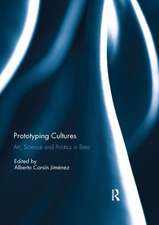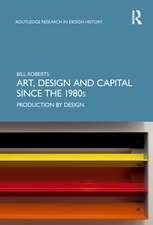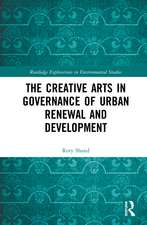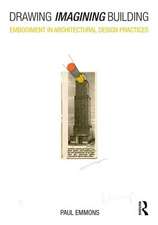The Clement Bible at the Medieval Courts of Naples and Avignon: A Story of Papal Power, Royal Prestige, and Patronage
Autor CathleenA. Flecken Limba Engleză Paperback – 16 noi 2016
Preț: 324.16 lei
Preț vechi: 439.54 lei
-26% Nou
Puncte Express: 486
Preț estimativ în valută:
62.05€ • 67.42$ • 52.15£
62.05€ • 67.42$ • 52.15£
Carte tipărită la comandă
Livrare economică 21 aprilie-05 mai
Preluare comenzi: 021 569.72.76
Specificații
ISBN-13: 9781138271067
ISBN-10: 1138271063
Pagini: 374
Dimensiuni: 174 x 246 mm
Greutate: 0.45 kg
Ediția:1
Editura: Taylor & Francis
Colecția Routledge
Locul publicării:Oxford, United Kingdom
ISBN-10: 1138271063
Pagini: 374
Dimensiuni: 174 x 246 mm
Greutate: 0.45 kg
Ediția:1
Editura: Taylor & Francis
Colecția Routledge
Locul publicării:Oxford, United Kingdom
Cuprins
Contents: Introduction: what is a biography of a Bible?; Illuminated Bibles at the court of Naples: the creation of the Clement Bible (c. 1325-1362); A courtier and a bishop at the king's court: the first known owners of the Clement Bible (c. 1326-1340); The artist at court in Naples: the stylistic meaning of Pietro Cavallini and the Clement Bible (c. 1308-1330); Vision and artistic translation in Naples: iconographic meaning and the Clement Bible under King Robert the Wise (1309-1343); Court play: the Clement Bible and the papal library in Avignon (c. 1341-1377); The court in exile: the Clement Bible and art in Avignon during the 'Babylonian captivity' (1341-1377); The divided court of the popes: the Clement Bible and Clement VII (1378-1394); The court's triumph and defeat: the Clement Bible beyond Clement VII (1394-1424); Epilogue: the Clement Bible after the Middle Ages; Appendix; Bibliography; Indexes.
Notă biografică
Cathleen A. Fleck is an Assistant Professor of Art History at Saint Louis University, USA
Recenzii
'Fleck‘s solid historical research draws upon papal archives, library inventories, church history, and artists workshop practices. By tracking the manuscript‘s biography and its career as a cultural commodity, Fleck makes an innovative contribution to manuscript studies that will have a broad appeal not only to scholars and students of papal history and manuscript studies, but also to those who study the connections between art and politics, the court cultures of Angevin Naples and Avignon, patronage practices of the popes, and the history of medieval libraries.' Janis Elliott, Texas Tech University, USA 'Fleck‘s study is a model for other scholars of manuscript illumination in its combination of recent theory with traditional analysis, as it reaches beyond problems of attribution and motif source that easily consume scholars working on thirteenth- and fourteenth-century Italian art. She couples her archival research and careful iconographic and stylistic analysis with recent historical and anthropological methodology... Fleck‘s The Clement Bible at the Medieval Courts of Naples and Avignon provides an important model for future studies of individual manuscripts. She brings to manuscript studies methodologies that provide fascinating insights into the appearance of objects, their lives, and the social and political contexts in which they have functioned. But she skillfully joins them to her extensive art-historical and codicological experience and knowledge. While this combination is essential to contemporary manuscript studies, it remains rare.' caa.reviews 'Tracing the Clement Bible‘s first century, Cathleen A. Fleck‘s well-researched and revealingbiography shows that its extraordinary journey began in the milieu of the royal court of Naples and moved next to the ancient Benedictine abbey of Monte Cassino from where it travelled to the papal palace of the Avignon popes and then to Spain.' Sharp News
Descriere
As a "biography" of a book, this social history traces the illustrated Bible of (Anti-pope) Clement VII through its production in Naples (c. 1330), its changing ownership and meaning in Avignon (c. 1340-1405), and its presentation as a gift to Alfonso, King of Aragon (c. 1424). The author's novel methodology assesses the manuscript's evolving significance and its role enhancing the power and prestige of its princely and papal owners.

























